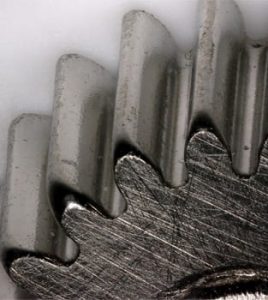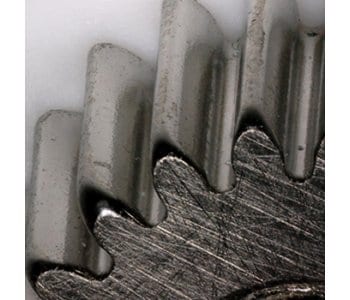 Despite their promising mechanical properties and the ability to be manufactured like plastics, bulk metallic glasses (BMGs) are slow to emerge as structural engineering materials. As with any new material entering the commercial market, the process of adoption is complex, especially if the material is radically different from alternative materials in terms of manufacturing and performance. BMGs are metal alloys that have been designed in such a way that they can be cooled from the molten state so fast that they freeze as a glass, giving them a random, or amorphous, arrangement of atoms similar to a liquid. The unique atomic arrangement of BMGs imparts them with properties that are attractive for engineering applications, such as high strengths, large flexibility without permanently bending, and very high hardness. Most importantly, BMGs are designed to have low melting temperatures, a condition needed to form a glass, which gives them the ability to be cast into complex molds. Despite all these benefits, BMGs are generally considered to be too brittle to be useful in many structural parts, and have long been relegated to cosmetic components, such as electronic casings and hinges.
Despite their promising mechanical properties and the ability to be manufactured like plastics, bulk metallic glasses (BMGs) are slow to emerge as structural engineering materials. As with any new material entering the commercial market, the process of adoption is complex, especially if the material is radically different from alternative materials in terms of manufacturing and performance. BMGs are metal alloys that have been designed in such a way that they can be cooled from the molten state so fast that they freeze as a glass, giving them a random, or amorphous, arrangement of atoms similar to a liquid. The unique atomic arrangement of BMGs imparts them with properties that are attractive for engineering applications, such as high strengths, large flexibility without permanently bending, and very high hardness. Most importantly, BMGs are designed to have low melting temperatures, a condition needed to form a glass, which gives them the ability to be cast into complex molds. Despite all these benefits, BMGs are generally considered to be too brittle to be useful in many structural parts, and have long been relegated to cosmetic components, such as electronic casings and hinges.
In this work by D. C. Hofmann et. al, foundational work for the development of BMG gears is presented. Wear resistance testing is used to screen large numbers of BMG alloys and new copper-zirconium-based BMGs are developed that show excellent potential for wear-resistance. Centimeter-sized spur gears are then cast and tested in a spur gear tester to evaluate the properties of different BMG gears as compared to conventional steel. The research shows that the design parameter for BMG gears is the toughness of the gear material, not the hardness, as is usually used with steel. Designing BMG gears is therefore more akin to designing with ceramics than it is with steel. This observation may prove fundamental when it comes to developing wear resistant gearboxes using BMGs.

















